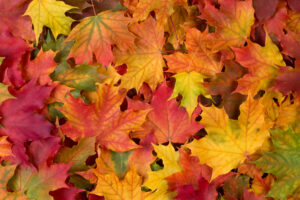 With only a few days until the Autumn equinox, there is no question that fall is in the air. The days are still warm, but the leaves are beginning to fall, the nights are getting cooler, and the wind and rain are sneaking in. With all this change in our external environment, it is not surprising that our internal chemistry is shifting as well. Luckily with a bit of Ayurvedic wisdom, we can observe these changes and nurture our needs to keep our bodies and minds happy, healthy, and strong for the season to come.
With only a few days until the Autumn equinox, there is no question that fall is in the air. The days are still warm, but the leaves are beginning to fall, the nights are getting cooler, and the wind and rain are sneaking in. With all this change in our external environment, it is not surprising that our internal chemistry is shifting as well. Luckily with a bit of Ayurvedic wisdom, we can observe these changes and nurture our needs to keep our bodies and minds happy, healthy, and strong for the season to come.
According to Ayurveda, each season will have its own routine, known as Rutu Charya (seasonal routine). Similar to a Dina Charya (daily routine), a Rutu Charya is generally a list of diet and lifestyle practices that are set in place to keep the body and mind stable, balanced, and free from dosha and disease. And like the Dina Charya, each individual’s seasonal routine may look a little bit different depending on their constitution (Prakruti) and their current state of health (Vikruti). Nonetheless, each season has its general qualities which give us a clear idea of practices that will keep us in balance, no matter what your body-type or specific needs are.
Fall, known as Visarga Kala in Sanskrit, carries the qualities of cool, windy, dry, mobile, changeable, light (as in not heavy), and dark, making it the season of Vata dosha. With these seasonal qualities manifesting around us, you may start to notice various Vata symptoms arising such as anxiety, fear, restlessness, mood swings, dryness, gas, bloating, constipation, fatigue, and trouble sleeping. These symptoms tend to sneak in as the season begins, but will undoubtedly worsen if the proper measures are not taken.
Traditional Ayurveda suggests slowly easing out of your summer routine and into a fall-appropriate routine beginning seven days prior to the Autumn equinox and continuing this transition for seven days after. This concept is true for each seasonal transition and is known as the time of Sandhi Rutu (the joining of the seasons). Sandhi Rutu is a very sensitive time that can either strengthen and prepare your body for the season to come, or allow doshas to begin to accumulate, setting you up for imbalance, illness, and disorder.
Please note that the following recommendations assume a temperate climate that generally provides a cool, dry, rainy, and windy fall season. If you are in a different climate zone, or you are experiencing an unusually hot fall season, it is important to listen to your specific environment to find out the best practices for you. For example, a hot and sunny fall season may still have some Vata elements but will also possess a strong Pitta presence as well.

Seasonal Tips for a Healthy Fall
1. Eat mostly warm, well-cooked, soupy meals.
As the weather begins to cool, our meals should begin to warm up! Being the season of Vata, it is essential to eat warm foods that are well-cooked and easy to digest such as kitchari, soups, stews, broths, casseroles, sautés, stir-fries, and similar dishes. These food types will keep your digestive fire (Agni) strong, your energy grounded, and your mind stable.
Here are my favorite kitchari recipes for the fall:
2. Say goodbye (for now) to cold, raw, dry, and rough foods.
As you welcome in more warming meals, you must also say goodbye to your cold smoothies and raw juices. Raw foods are considered rough, hard to digest, and generally strong in the air and space element—all of which are extremely Vata-aggravating. Eating these food types can provoke issues such as coldness, fear, anxiety, insomnia, spaciness, restlessness, and dryness.
Here are some general foods to avoid for the fall:
- Cold, raw smoothies
- Cold, raw juice
- Cold salads
- Raw veggies
- Limit raw fruits (favor in-season only—see list below)
- Dried fruits
- Dry crackers, toast, pretzels, popcorn, and chips
- Frozen foods (ice cream, popsicles, etc)
- Any food eaten cold (hummus, sandwiches, salad, etc)
Try my Vata-Soothing Smoothie recipe!
3. Slowly incorporate fall seasonal fruits and veggies.
Eating seasonally is an easy and fool-proof way to keep your body and digestion strong and in balance for each season. Remember, always listen to your Mother (Nature that is)!
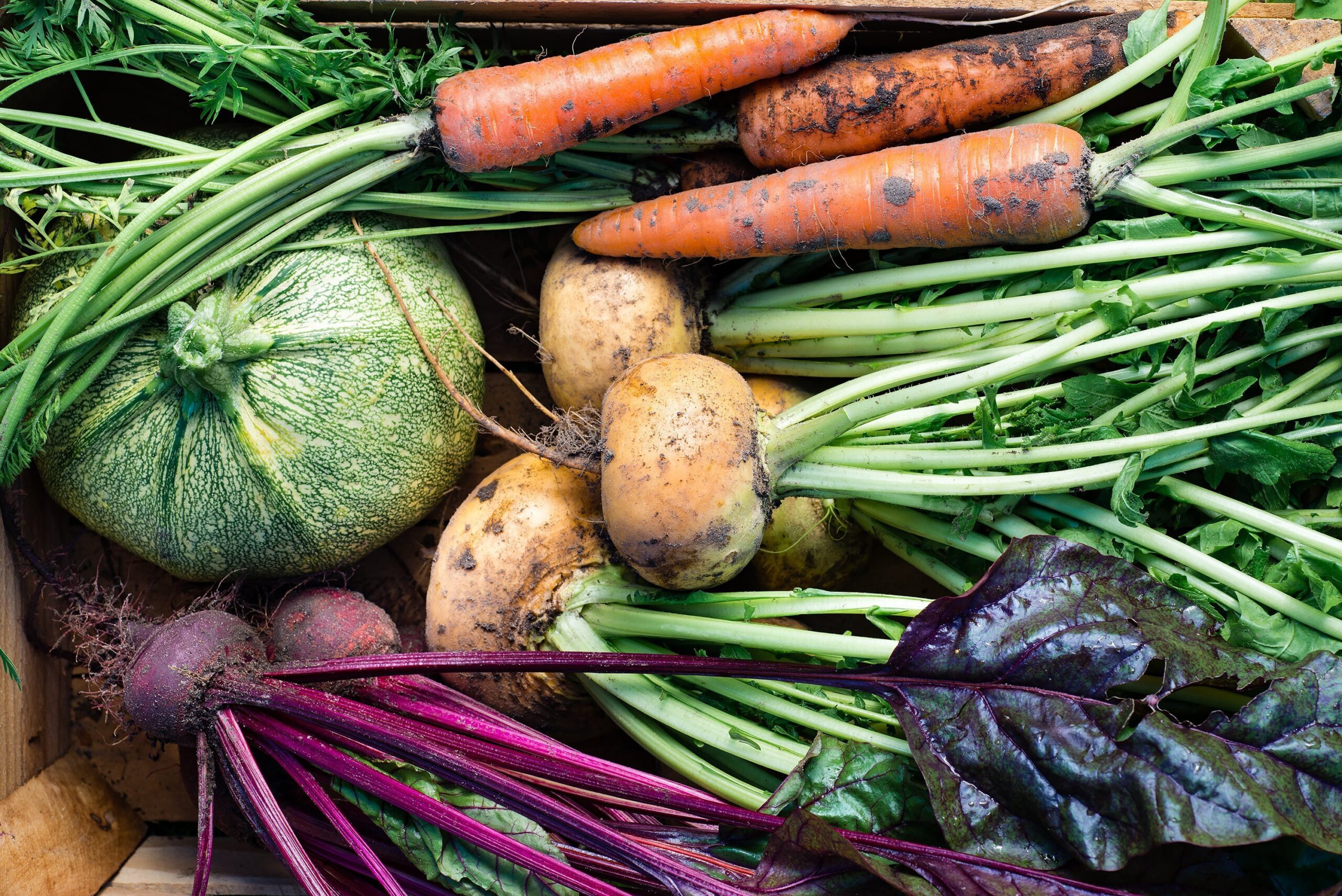
FALL FRUIT LIST
- Apples
- Pears
- Bananas
- Cranberries (fresh)
- Grapes
- Raspberries (until Oct)
- Dates (fresh)
- Limes (until Oct)
- Lemons (beginning Nov)
FALL VEGETABLE LIST
- Beets
- Bell Peppers
- Broccoli
- Brussel Sprouts
- Cabbage
- Carrots
- Cauliflower
- Celery
- Leafy Greens (Collard Greens, Kale, Chard, Spinach, Arugula)
- Garlic
- Ginger
- Green Beans
- Parsley
- Cilantro
- Mushrooms
- Onions
- Parsnips
- Peas (fresh)
- Potatoes
- Pumpkin
- Radishes
- Rutabagas
- Sweet Potatoes
- Turnips
- Winter Squash
4. Drink warm (caffeine-free) beverages throughout the day.
Have you ever had a warm cup of tea and felt instantly more calm? I have! Warm (caffeine-free) beverages are extremely soothing to the body and mind. Further, they will keep you warm, keep your immunity strong, and kindle your digestive fire (Agni).
As we move into fall, I suggest starting your day with a warm cup of water; sipping on warm water, broths, and herbals teas between meals; and avoiding ALL cool, cold, and especially iced beverages!
Here are some of my fall favorites:
- CALM Tea
- Ayurvedic Spiced Chai
- Tulsi Synergy Spice
- Ginger Tea (get recipe here)
- Tulsi Turmeric Chai (get the recipe here)
- Bone Broth (get the recipe here)
- Veggie Broth (get recipe here)
- Immunity Broth (get recipe here)
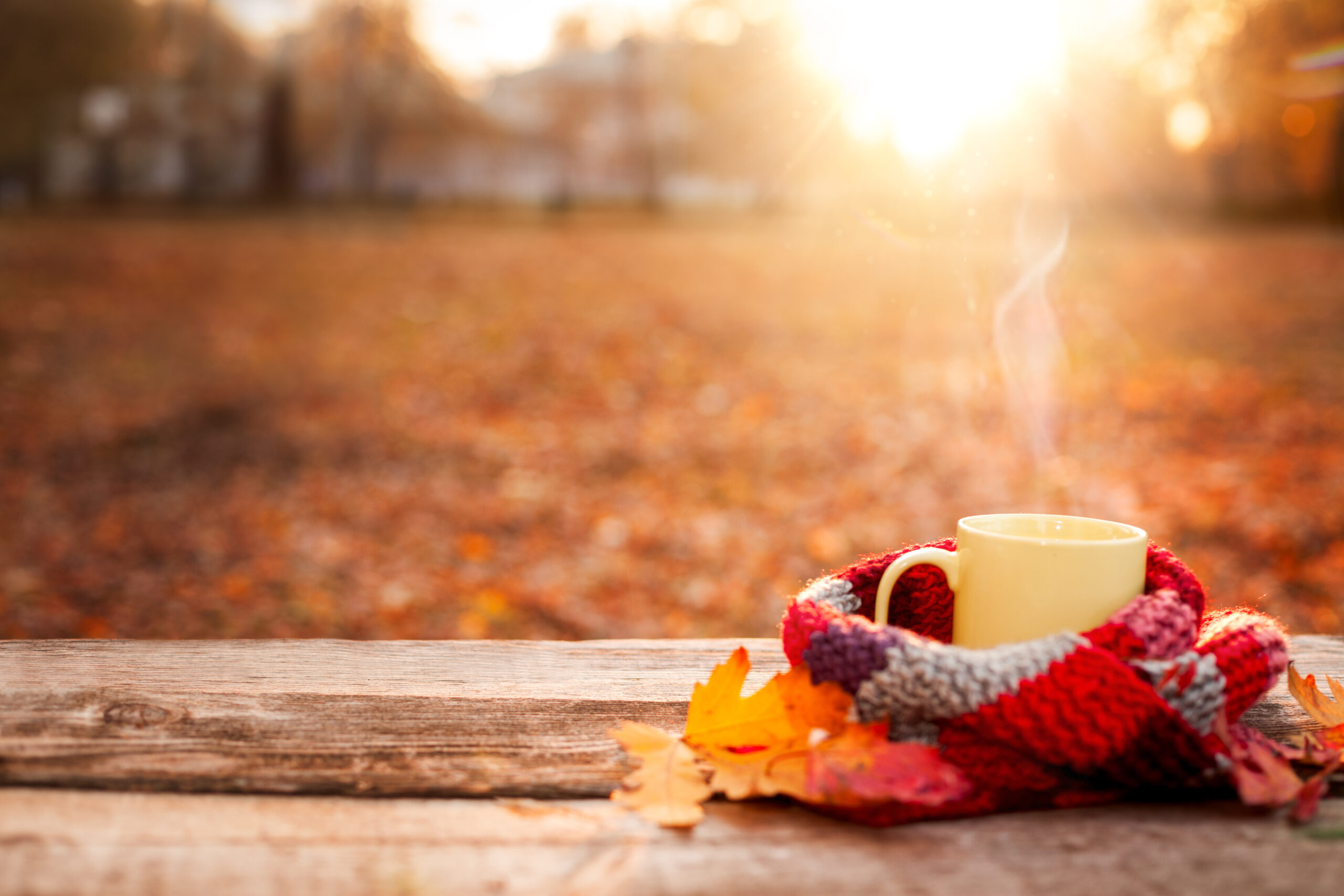
5. Keep to a healthy and consistent daily routine.
Summertime often shakes our routines up a bit with more travel, less work, and more social activity. Fall is a great time to come back to the basics and regulate our daily scedule again. Keeping a stable and healthy daily routine will keep your circadian rhythm in line, your mind stable, and your Vata balanced. This in turn helps to regulate our sleep, digestion (and appetite), elimination, mood, and energy.
To begin, keep it simple by focusing on a consistent and healthy sleeping and eating routine. Once you have got this in order, add in some other regular self-care practices such as exercise, oil massage, Yoga, meditation, and bath time.
Here is a general routine to get you started—feel free to tweak and make it your own using the pdf printout:
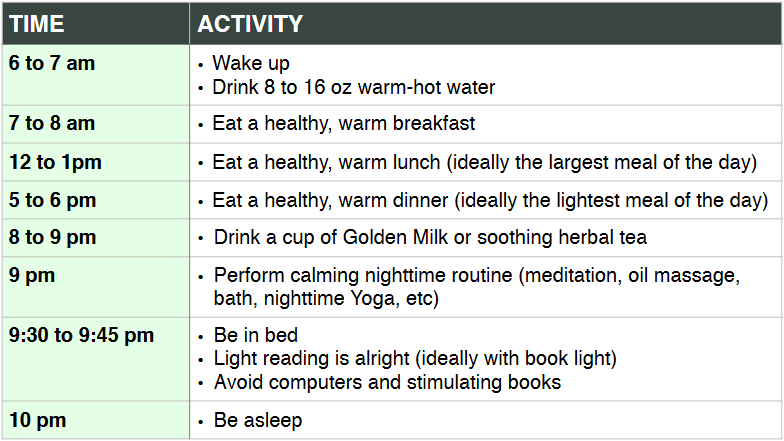
6. Oil, Oil, Oil!
If you know anything about Ayurveda, you will likely know that we LOVE oil! Although Ayurvedic oil treatments are useful in a variety of ways, oil is one of the most potent medicines for calming Vata, strengthening the nervous system, and lubricating dryness.
Depending on where you need care the most (and it may be in multiple areas), here are some oil recommendations for your fall routine:
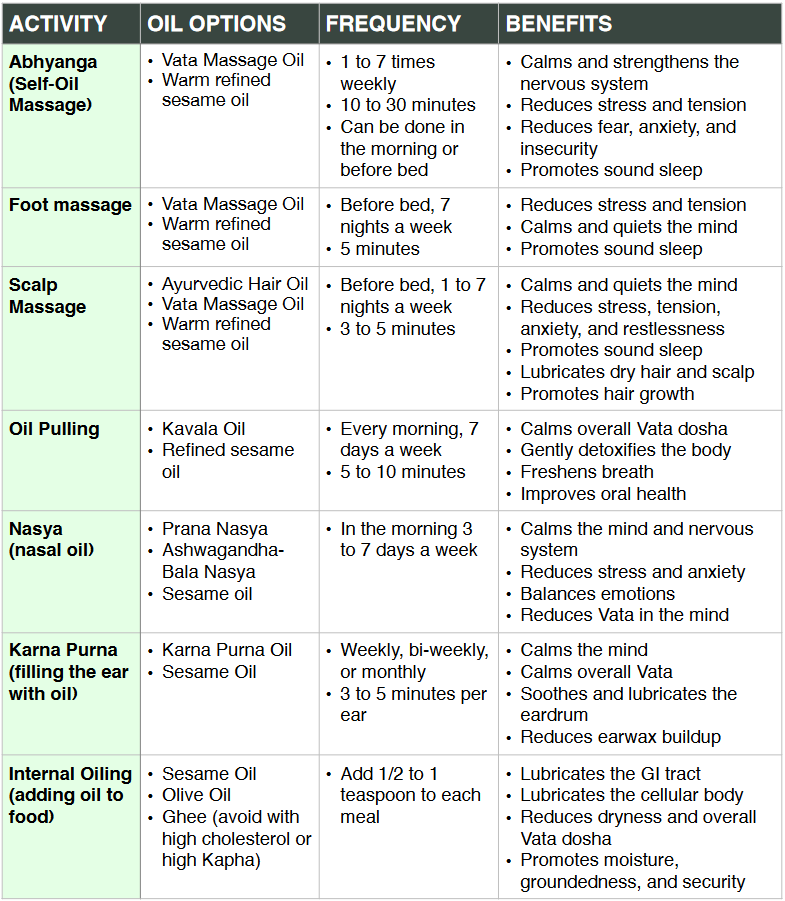
Purchase our Vata Massage Oil here.
Purchase our Kavala Oil for oil pulling here.
Purchase our Karna Purna ear oil here.
7. Take hot baths or sauna soaks regularly.
You do not need to tell me twice for this one! Soaking in a hot bath or sauna is an amazing way to warm your body, improve circulation, boost immunity, quiet your mind, and reduce stress. It also has been shown to activate the Vagus Nerve as well as the Parasympathetic Nervous System (aka our “rest and digest” center).
To make this recommendation effective, however, it is important to be consistent. If you are soaking to maintain balance, once a week is likely plenty (unless you’re like me and want to do more). If you are already dealing with coldness, anxiety, insomnia, and other Vata issues, I would recommend soaking 3 to 7 days/nights each week for at least 15 minutes per session. If your Pitta is high, keep the temperatures fairly mild for either treatment and keep the duration shorter (10 to 15 minutes max).
For more healing benefits try our Ginger Bath Blend or our DIY Ginger Bath Recipe!
8. Slow down, rest more.
After a summer of longer days, later nights, more travel, and more social gatherings, it is essential for our health to begin to slow down and rest! You probably have already noticed you are beginning to feel tired earlier and are not quite as motivated as usual. This is quite natural, and although it is important to keep up with work, daily tasks, exercise, and other essentials, it is equally as important to honor our tiredness by reducing our workload and carrying less on our plate.
So how can you rest more? My first and perhaps biggest recommendation is to simply go to bed earlier. Our bodies are naturally getting tired earlier this time of year. Being asleep by 10 pm (or earlier) has been proven to be the best time for the highest quality sleep; and high-quality sleep equals energy, rejuvenation, strength, and resilience.
Other ways to make time for more rest include prioritizing your work and daily “to-do’s. Do what is very necessary and put aside what can be done another time (you’ll be amazed how freeing this is!). Keep up with exercising at least 30 minutes daily, but slow it down a bit (especially on your tired days). Instead of a run, go for a walk; instead of your 60-minute exercise video, stick to 30 minutes; instead of heavyweights, use lighter weights or bodyweight exercises. And on days you need to rest your body—rest and reset!
9. Perform Restorative Yoga regularly.
Restorative Yoga is beneficial any time of year but can be extra “juicy” during the fall when Vata is high and restless. Fall is the time for restoration, and performing a few restorative Yoga poses each day will undoubtedly keep your mind grounded and your body relaxed. They are known to reduce stress, promote sound sleep, promote muscle recovery, and reset the body and mind on a deep level.
To incorporate Restorative Yoga into your daily life, you may wish to find a helpful video on YouTube for ideas and sequences. You can also attend a Yin Yoga or Restorative Yoga class at your local Yoga studio. These classes can be great for keeping you motivated and on track, but will also give you ideas of poses you can practice at home, in-between classes.
For those who prefer to keep their practice at home and self-directed, here are a few of my favorite restorative Yoga poses:
- Legs Up the Wall
- Supta Badhakonasana (reclined butterfly pose)
- Shavasana (corpse pose)
- Supported forward fold (using pillows or bolsters)
- Supported Upavishtakonasana (wide leg angle pose using pillows or bolsters)
- Supported Janu Shirsasana
- Balasana (child’s pose) with or without support

10. Consider a Kitchari Cleanse.
According to Ayurveda, a deep cleanse should only be done (up to) twice a year during the transitional seasons of spring and fall. Performing a cleanse during the fall season is said to remove excessive Pitta from the previous summer season, flush toxins, and provide a strong foundation for the cold and flu season to come.
Depending on your state of health, strength, and energy, a Kitchari Cleanse may be a great option for resetting your body and mind. You can keep it mild by focusing on eating a mono-diet of kitcahri for a set amount of days (generally 3 to 7); or you may wish to enhance the effects by adding in some cleansing herbs, medicated ghee, and herbal teas. No matter what you choose, make sure to listen to your body and do not overdo it. Remember, fall is the season of Vata which increases your risk of depletion, dryness, and anxiety, all of which can be provoked by cleansing beyond your threshold.
Order your Kitchari Supplies here.
Click here for Ayurvedic Tips for a Fall Cleanse.
Click here to discover how to perform a Kitchari Cleanse.
Click here to discover my 3-day Ayurvedic Cleanse.
11. Go for a walk in the fresh air each day.
The fall is the perfect season for outdoor walks and I hope you will take advantage of it fully! The weather is generally not too hot or cold, the air has that Prana-enhancing crispness, and the beauty of the changing and falling leaves is next to miraculous.
So aim for a 10 to 30-minute walk each day, ideally without your phone or other electronics. If you have company, I suggest walking together but take some time for silence to observe and absorb all the beauty and Prana (life) around you. And most of all, breathe in the fresh air, release unnecessary thoughts and tension, and be present.
12. Dress in layers.
I’m not sure about your local climate, but here in Colorado, the weather can easily change 40º or more in a single day, and even change 10º to 20º in an hour or less. Since fall is very changeable and unpredictable (more qualities of Vata), wearing layers will help you be prepared for any weather no matter the hot sun, cool winds, or damp rain. Dressing appropriately in all types of weather means wearing sun hats when in direct sun, wearing sweaters when the temperature drops, and wearing scarves and warmer hats when the winds start to pick up. With these precautions, you can keep your immune system strong and your body in balance.
13. Avoid direct wind.
Although fragile little Vata can be provoked by countless factors, there are few quite as direct and extreme as being in windy weather conditions. In Ayurveda, “like increases like” and Vata, which is the dosha of air, space, and movement, is instantly disrupted when exposed directly to a windy environment. Being in the wind for too long will easily lead to spaciness, restlessness, nervousness, anxiety, sleeplessness, and dryness.
In areas like Colorado, our windy fall days (and nights) can easily reach 50 MPH or more. When this fairly common fall weather comes around, it is important to stay inside as much as possible (even if this means postponing your walk), and when you do have to venture outside, make sure to cover your neck, ears, and head. If you are inside trying to sleep and the wind is howling, this can disrupt your sleep as well. For these times, I suggest closing your windows and blinds, turning on a white noise maker, and, if necessary, wearing earplugs.
14. End the day with a cup of Golden Milk.
Ahhhh… Just thinking about sipping on a soothing cup of Golden Milk on a cool fall evening makes me feel warm and cozy inside! Golden Milk is made by steeping hot milk with turmeric, ginger, cinnamon, cardamom, pepper, nutmeg, and other aromatic, warming spices. For additional Vata-soothing benefits, you can even add in Ashwagandha.
Warm milk itself is very relaxing (thanks to the production of tryptophan) and with these added spices, you are sure to soothe your body, mind, and soul. It is the perfect way to ground your energy before bed and prepare you for sound and restful sleep.
Try our delicious Golden Milk blend!
Click here for our Golden Milk Recipe.
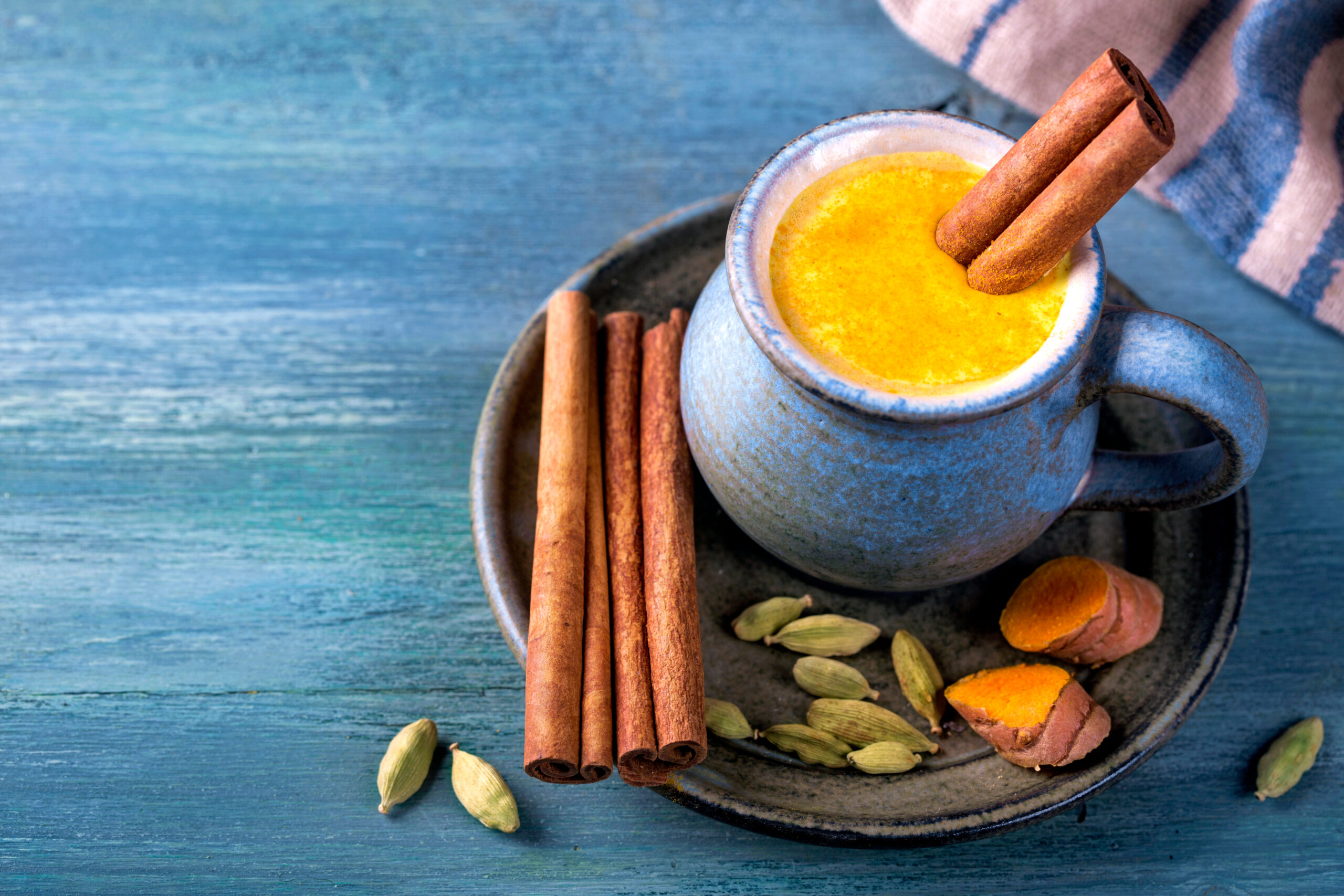
15. Perform a weekly Dashamul Basti.
Enema therapy may not be everyone’s cup of tea, but if you are open to it, performing weekly enemas using a Dashamula herbal infusion is an excellent and effective way to treat and prevent Vata issues during the fall season. Vata dosha’s home base is in the colon and applying the Dashamula “10-roots” formula directly into this organ is a powerful way to calm Vata and alleviate issues such as gas, bloating, constipation, anxiety, fear, restlessness, and insomnia.
For this recommendation, you can pick a single day each week to perform the Basti therapy, either first thing in the morning or later in the evening (on an empty stomach). Make sure to eat simple, light, easy-to-digest meals on this day and drink some soothing, mildly cleansing herbal teas. Avoid strenuous activity, travel, excessive social activity, and heavy workloads. If a weekly enema treatment is too much, you can aim for bi-weekly or monthly applications instead.
Purchase Dashamul Formula here.
Purchase our Herbal Enema Kit here.
Read more details on Ayurvedic Basti (enema) therapy here.
Happy Fall to ALL!!!
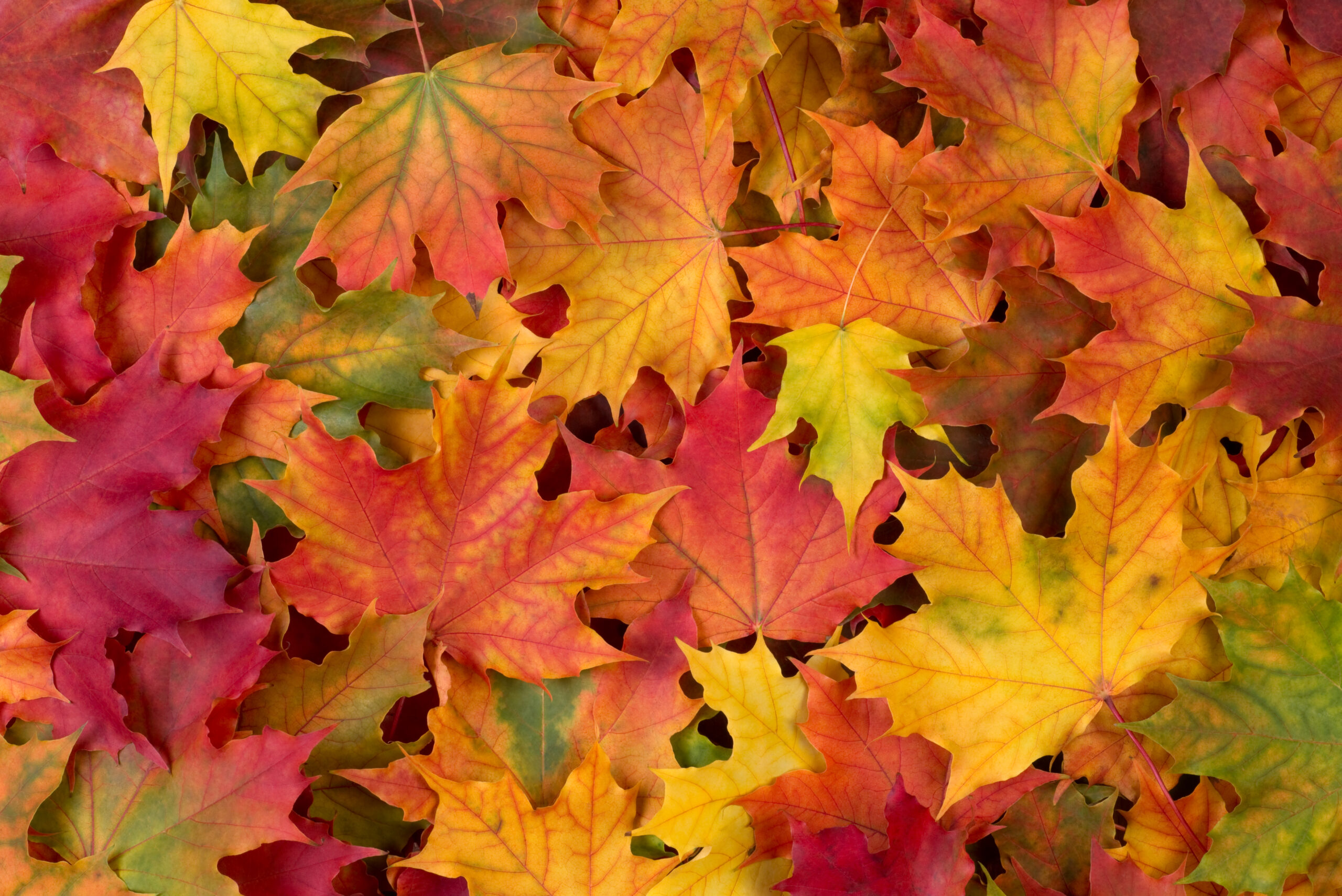

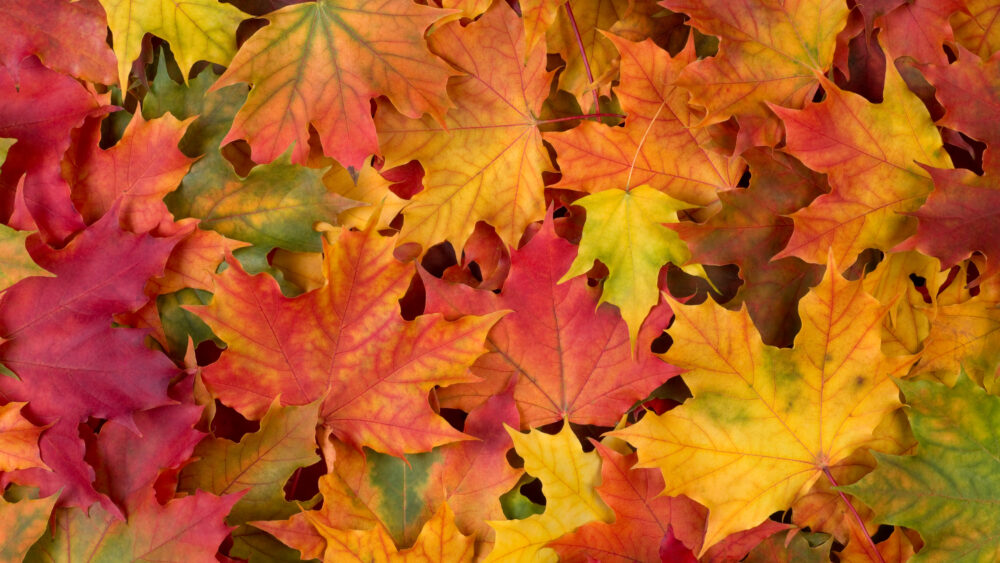


Thank you for this lovely post..
Hi Zoe,
Thanks for writing in! I am happy you enjoyed the post and I hope it helps keep you in balance for this beautiful fall season!
Many blessings,
Danielle
thank you for such informative, thoughtful, and insightful, posts to welcome autumn gently!
Of course, Melissa! Thank you for taking the time to read!
Wishing you a happy and healthy fall:)
Namaste,
Danielle